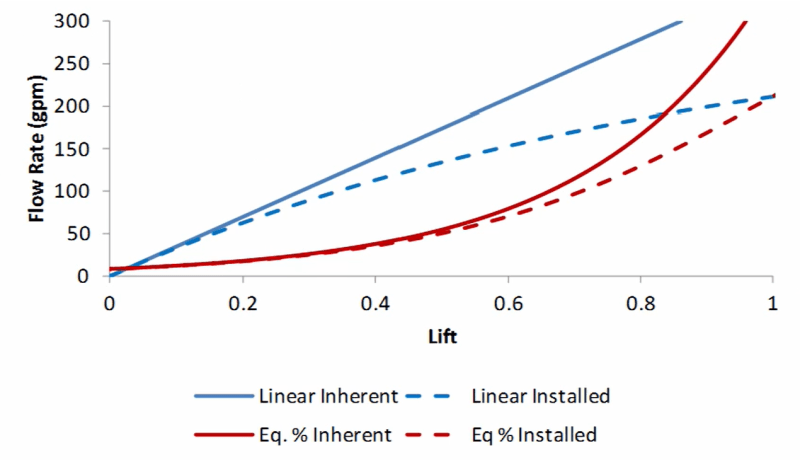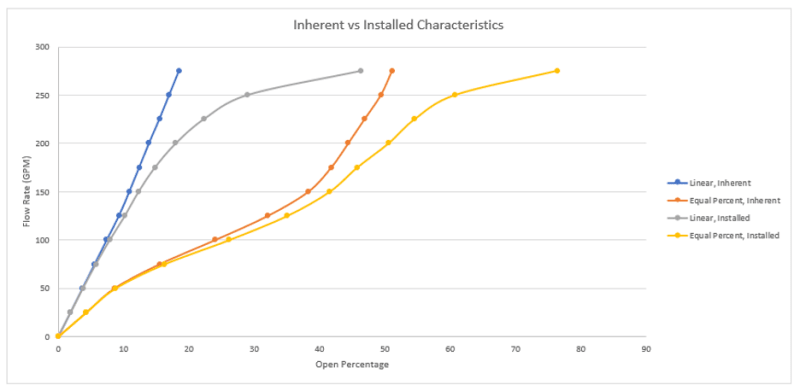SilverRule
Chemical
Can anyone explain how fundamentally the inherent characteristic curve of a control valve shift UP and LEFT when it's installed?
I understand that there's other pressure-generating and pressure-reducing components in the system that affect the curve. But what is the mechanism behind why it shifts UP and LEFT specifically? In other words, whether for characteristic is linear or equal percentage, why can more flow be achieved at a smaller valve opening after the control valve is installed?
I'm going through Crane TP410 and have also looked at other resources but haven't been able to find a clear explanation.
Thanks!
I understand that there's other pressure-generating and pressure-reducing components in the system that affect the curve. But what is the mechanism behind why it shifts UP and LEFT specifically? In other words, whether for characteristic is linear or equal percentage, why can more flow be achieved at a smaller valve opening after the control valve is installed?
I'm going through Crane TP410 and have also looked at other resources but haven't been able to find a clear explanation.
Thanks!



